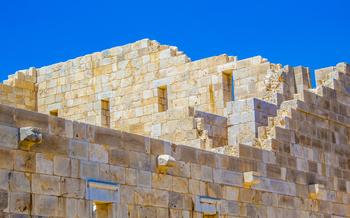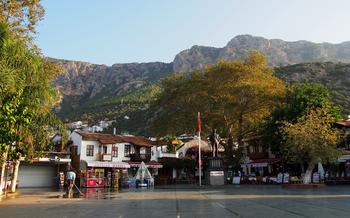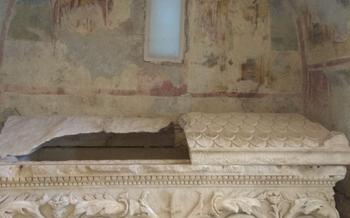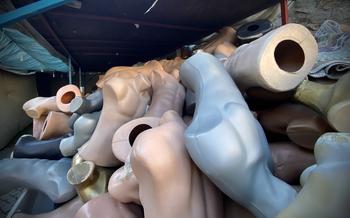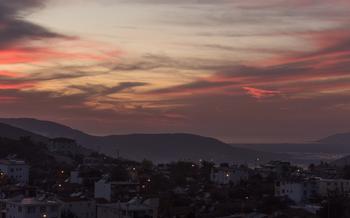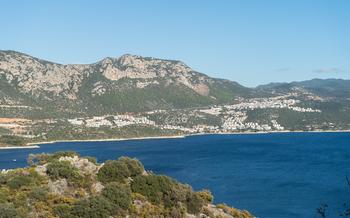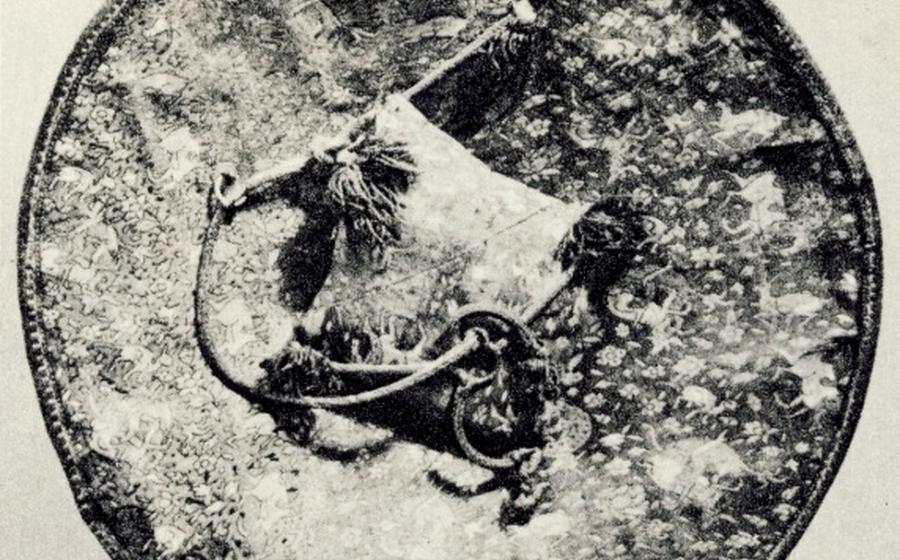
Lycian Rock Tombs in Myra
- Journey Through Time: Exploring the Lycian Rock Tombs in Myra
- Reaching Myra's Lycian Treasures: A Guide for Travelers
- Myra's Rich History: Unveiling the City's Past
- Inside the Lycian Rock Tombs: A Glimpse into Ancient Funerary Practices
- Architectural Mastery: Unveiling the Secrets of Lycian Rock-Cut Architecture
- The Lycian League and Myra's Role: A Tale of Ancient Governance
- The Fascinating Life of Saint Nicholas: A Myra Legend
- Practical Tips for a Memorable Visit: Making the Most of Your Time
- Other Myra Highlights: Exploring Beyond the Rock Tombs
- Capturing the Essence of Myra: Tips for Stunning Photographs
- Unveiling the Secrets of the Lycian Script: A Glimpse into Ancient Communication
- Myra in Literature and Art: A Cultural Legacy
- Myra for History Buffs: A Journey Through the Ages
- Myra for Nature Lovers: Unveiling the Natural Wonders
- Insider Tip: Unearthing Hidden Gems
Journey Through Time: Exploring the Lycian Rock Tombs in Myra
Myra, an ancient city nestled in the Mediterranean region of Turkey, invites travelers on a captivating journey through time. Its most striking feature is undoubtedly the Lycian rock tombs, a testament to the region's rich heritage and the artistry of the ancient Lycian civilization. These impressive rock-cut structures, dating back to the 4th century BC, offer a fascinating glimpse into the funerary practices and beliefs of the Lycians. Visitors to Myra can wander amidst these ancient tombs, marveling at their intricate facades, exploring their burial chambers, and uncovering the secrets of a bygone era.
Reaching Myra's Lycian Treasures: A Guide for Travelers
Location and Accessibility:
Myra is situated in the Mediterranean region of Turkey, within the province of Antalya. To reach Myra, travelers can take a scenic drive along the Turquoise Coast, enjoying breathtaking views of the Mediterranean Sea. Public transportation options are also available, with regular buses departing from nearby cities like Antalya and Kemer.
Admission and Timings:
The Lycian Rock Tombs in Myra are open to the public daily, with standard admission fees applicable. Visitors are advised to check the official website or local tourism offices for the most up-to-date information on admission prices and any seasonal variations in operating hours.
Guided Tours:
Booking a guided tour is an excellent way to gain a deeper understanding of the Lycian Rock Tombs and Myra's rich history. Professional guides provide insightful commentary, sharing historical anecdotes and explaining the cultural significance of the site. Guided tours can be arranged through local tour operators or booked online in advance.
Photography Tips:
To capture stunning photographs of the Lycian Rock Tombs, it's advisable to visit during the golden hours of sunrise or sunset when the soft light enhances the intricate details of the carvings. Using a tripod for stability is recommended, especially in low-light conditions. Experiment with different angles and perspectives to create visually appealing compositions that convey the grandeur of these ancient structures.
Myra's Rich History: Unveiling the City's Past
Myra's history is as captivating as its rock tombs. The city traces its roots to the Lycian civilization, an ancient Anatolian people known for their seafaring prowess and intricate rock-cut architecture. Myra's strategic location at the crossroads of trade routes made it a significant port city and a member of the Lycian League, a confederation of Lycian city-states.
During the Roman period, Myra flourished as a prominent port and administrative center. Its strategic location on the Mediterranean Sea made it a vital hub for trade and commerce. Myra also played a significant role in the spread of Christianity, becoming a center of early Christian activity. The city is particularly associated with Saint Nicholas, the renowned bishop of Myra and the inspiration behind the modern-day figure of Santa Claus.
Myra's rich history is further evidenced by the numerous archaeological findings unearthed at the site. These discoveries include inscriptions, coins, pottery, and other artifacts that shed light on the city's past and its interactions with different cultures. From its Lycian origins to its Roman transformation and its role in early Christianity, Myra's history is a testament to its enduring significance throughout the ages.
Inside the Lycian Rock Tombs: A Glimpse into Ancient Funerary Practices
The interiors of the Lycian rock tombs in Myra are a testament to the intricate funerary practices and beliefs of the ancient Lycians. Upon entering these timeworn chambers, visitors are greeted by elaborately carved facades adorned with intricate motifs and symbols that speak to the cultural and religious significance of these burial sites.
Intricate Facades:
The entrances to the tombs are adorned with exquisite carvings that depict a variety of subjects, from mythical creatures to scenes from daily life. These carvings provide a glimpse into the artistic traditions and symbolism of the Lycians, offering valuable insights into their beliefs about the afterlife.
Burial Chambers:
The burial chambers within the rock tombs are simple yet evocative, featuring niches carved into the walls to accommodate the deceased. Sarcophagi, often intricately carved and decorated, were used to hold the remains of the departed, adding to the solemnity of these ancient resting places.
Ancient Rituals:
The Lycians practiced elaborate funerary rituals that accompanied the burial of their loved ones. Grave goods, such as jewelry, pottery, and personal belongings, were placed within the tombs to accompany the deceased on their journey into the afterlife, reflecting the belief in a continued existence beyond the physical realm.
Symbolism and Iconography:
The iconography found within the tombs holds deep symbolic meaning, providing clues to the Lycians' beliefs about the afterlife and their connection to the divine. Common motifs include the pomegranate, symbolizing fertility and rebirth, and the eagle, representing the soul's journey to the heavens.
Architectural Mastery: Unveiling the Secrets of Lycian Rock-Cut Architecture
The Lycian rock tombs in Myra showcase remarkable architectural achievements that reflect the ingenuity and skill of ancient Lycian builders. These tombs were meticulously carved directly into the rock face using specialized techniques, demonstrating the precision and artistry of Lycian craftsmanship. The tombs exhibit a variety of forms, including single-chambered and multi-chambered structures, each adorned with intricate facades and elaborate carvings. The structural integrity of these tombs is a testament to the engineering prowess of the Lycians, who ensured the stability and longevity of these monumental structures. Ongoing conservation efforts aim to preserve these ancient wonders for future generations, allowing us to continue to marvel at the architectural mastery of the Lycian civilization.
The Lycian League and Myra's Role: A Tale of Ancient Governance
The Lycian League, a confederation of Lycian cities, played a significant role in the governance of the region. Myra held a prominent position within this league, contributing to its political and administrative affairs. The league functioned as a democratic alliance, fostering cooperation among its member cities. Myra's influence within the league stemmed from its strategic location, economic prosperity, and cultural significance. Its representatives actively participated in league assemblies, contributing to collective decision-making and ensuring the welfare of the Lycian people. This political structure allowed Myra to maintain its autonomy while benefiting from the collective strength and resources of the league. The Lycian League served as a model of ancient governance, demonstrating the power of collaboration and shared responsibility among independent city-states.
The Fascinating Life of Saint Nicholas: A Myra Legend
Amidst the ancient ruins of Myra, the name of Saint Nicholas stands out as a beacon of compassion and generosity. This historical figure, renowned worldwide as the inspiration behind the modern-day Santa Claus, played a pivotal role in shaping the religious and cultural heritage of the region.
Born in Patara, a city not far from Myra, Saint Nicholas devoted his life to serving others. He became the Bishop of Myra during the 4th century and is revered for his kindness, charity, and unwavering faith. Legends abound about his miraculous deeds, including the secret distribution of dowries to impoverished young women to save them from a life of prostitution.
Saint Nicholas' reputation for generosity and gift-giving earned him the title of patron saint of children. Over time, his image transformed into the jolly figure known as Santa Claus, embodying the spirit of giving and bringing joy to children worldwide.
In Myra, the legacy of Saint Nicholas lives on. His tomb, located within the Church of Saint Nicholas, attracts pilgrims and visitors from around the world who come to pay homage to this beloved saint. The church itself is a testament to the enduring influence of Saint Nicholas, showcasing impressive Byzantine architecture and intricate mosaics that depict scenes from his life.
Exploring the life of Saint Nicholas in Myra offers a glimpse into the origins of a beloved holiday tradition and the enduring power of compassion and generosity.
Practical Tips for a Memorable Visit: Making the Most of Your Time
When embarking on your journey to explore the Lycian Rock Tombs in Myra, it is essential to ensure a safe and enjoyable experience. Practical considerations play a crucial role in making the most of your visit. First and foremost, prioritize your comfort by wearing appropriate footwear. The paths leading to the tombs traverse uneven terrain, and comfortable shoes will enhance your mobility.
Turkey's sunny climate calls for sun protection measures. Carry sunscreen, sunglasses, and a hat to shield yourself from the sun's intensity. Stay hydrated by bringing water, as there are limited food and beverage options at the site. Consider packing snacks to sustain your energy levels throughout your exploration.
Respectful photography practices are encouraged. Always ask permission before photographing people, especially when visiting religious or cultural sites. By adhering to these simple guidelines, you can create a memorable and fulfilling experience while preserving the authenticity of Myra's treasures.
Other Myra Highlights: Exploring Beyond the Rock Tombs
While the Lycian rock tombs are undoubtedly the main attraction in Myra, there are several other notable landmarks that are worth exploring. The ancient theater, located a short walk from the rock tombs, is a well-preserved structure that once hosted performances and public gatherings. Visitors can marvel at its impressive architecture and imagine the lively atmosphere of ancient Myra.
The Church of Saint Nicholas, built in honor of the city's patron saint, is another must-see attraction. Featuring impressive Byzantine architecture, the church houses beautiful mosaics and frescoes that depict scenes from the life of Saint Nicholas. Visitors can pay their respects at the saint's tomb, which is located within the church.
To delve deeper into Myra's rich history, visitors can visit the archaeological museum, which houses a collection of artifacts and findings from the city's excavations. The museum provides insights into the daily lives of the ancient Lycians, Romans, and Byzantines who inhabited Myra.
Finally, visitors should take advantage of the elevated location of the rock tombs to enjoy breathtaking panoramic views of the surrounding landscape. The stunning vistas encompass the Mediterranean Sea, the Taurus Mountains, and the lush countryside, offering a perfect opportunity to capture the essence of Myra's natural beauty.
Capturing the Essence of Myra: Tips for Stunning Photographs
Myra's captivating beauty and historical significance are best captured through the lens of a camera. To capture the essence of this ancient city, consider visiting during the golden hours of sunrise or sunset. The warm light of these times casts a magical glow on the rock tombs, enhancing their architectural details and creating a picturesque backdrop.
Pay attention to composition and perspective when framing your shots. Experiment with different angles and vantage points to create visually appealing photographs. Utilize the natural elements, such as trees, hills, and the surrounding landscape, to add depth and context to your images.
A tripod is essential for steady shots, especially in low-light conditions. It will help you avoid blurry or shaky images, ensuring sharp and crisp photographs. Embrace the storytelling potential of photography. Capture the emotions and experiences of your visit, the interactions between people, and the details that make Myra unique. Tell a visual story that conveys the essence of this ancient city.
Unveiling the Secrets of the Lycian Script: A Glimpse into Ancient Communication
The Lycian script, a unique writing system developed by the Lycian civilization, holds a significant place in the cultural heritage of Myra. This ancient script, consisting of 29 letters, evolved from the Anatolian hieroglyphs and was used by the Lycians to record their language and history. The deciphering of the Lycian script in the 19th century opened a new chapter in the understanding of Lycian culture and identity.
Inscriptions and texts written in the Lycian script have been found throughout Myra, offering valuable insights into the language, customs, and beliefs of the Lycians. These inscriptions range from simple epitaphs to more elaborate dedications and historical accounts, providing a glimpse into the daily lives and achievements of the ancient Lycians.
The Lycian script serves as a key to unlocking the mysteries of Lycian history and culture. By studying these inscriptions, scholars have gained a deeper understanding of the Lycian civilization, its political and social organization, and its relationship with neighboring cultures. The Lycian script stands as a testament to the rich linguistic and cultural heritage of Myra and the Lycian people.
Myra in Literature and Art: A Cultural Legacy
Myra's allure extends beyond its physical remains, as it has also captured the imaginations of writers and artists throughout history. Ancient authors such as Herodotus and Strabo made references to Myra and its rock tombs in their writings, providing valuable insights into the city's significance in the ancient world. In the realm of art, Myra's landmarks have been immortalized in paintings, sculptures, and mosaics, showcasing the enduring fascination with this historical site. Modern artists have also drawn inspiration from Myra's rich heritage, creating contemporary interpretations that reimagine its history and cultural significance. These artistic expressions serve as a testament to the enduring legacy of Myra, demonstrating its ability to transcend time and inspire creativity across various mediums.
Myra for History Buffs: A Journey Through the Ages
Myra stands as a testament to the rich tapestry of history that has unfolded within its ancient walls. As history buffs delve into the depths of this remarkable site, they will uncover a treasure trove of significant historical events and cultural encounters that have shaped its legacy. Archaeological discoveries, including inscriptions, artifacts, and architectural remains, provide tangible evidence of Myra's past, shedding light on different periods of its existence. From the Lycians who first established the city to the Romans who left their mark with impressive infrastructure, and the Byzantines who introduced Christianity, Myra has witnessed the rise and fall of civilizations, each leaving behind its unique imprint. Drawing parallels between Myra and other ancient cities such as Ephesus or Pompeii offers a broader historical context, allowing visitors to appreciate its significance within the wider framework of ancient Mediterranean history.
Myra for Nature Lovers: Unveiling the Natural Wonders
Beyond its historical allure, Myra captivates nature enthusiasts with its picturesque surroundings. Nestled amidst majestic mountains and overlooking the shimmering Mediterranean Sea, Myra offers a feast for the senses. The vibrant tapestry of nature unfolds as visitors embark on scenic hiking trails that wind through the region's diverse landscapes. Along these paths, hikers are rewarded with panoramic vistas that showcase the region's rich tapestry of flora and fauna.
Myra serves as a haven for birdwatchers, with its skies teeming with a kaleidoscope of migratory birds and local species. The keen-eyed observer can spot graceful eagles soaring overhead, colorful bee-eaters flitting among the wildflowers, and melodious nightingales serenading the twilight hours. The harmonious chorus of birdsong creates a symphony that echoes through the valleys, immersing visitors in nature's enchanting embrace.
To fully appreciate Myra's natural splendor, embrace sustainable tourism practices that protect and preserve its delicate ecosystem. Tread lightly on the land, leaving no trace of your presence, and respect the wildlife that calls this region home. By embracing responsible tourism, visitors can ensure that Myra's natural wonders remain pristine for generations to come.
Insider Tip: Unearthing Hidden Gems
For those seeking an exclusive experience, Myra holds several hidden gems waiting to be discovered. Venture off the beaten path and explore secret pathways that lead to secluded spots within the rock tombs, offering unique perspectives and a sense of tranquility. As the sun begins its descent, time your visit to witness the breathtaking views of the surrounding landscape bathed in a golden glow. Capture the magic of Myra's sunset, when the ancient tombs cast long shadows and the sky transforms into a canvas of vibrant hues.
To fully immerse yourself in the local culture, venture into nearby towns and savor authentic Turkish cuisine at family-run restaurants. Indulge in culinary delights that reflect the region's rich culinary heritage. Escape the crowds and experience the charm of Myra during the shoulder season (spring and autumn). The mild weather and fewer tourists create an ideal atmosphere for a more intimate encounter with the site's history and natural beauty.
